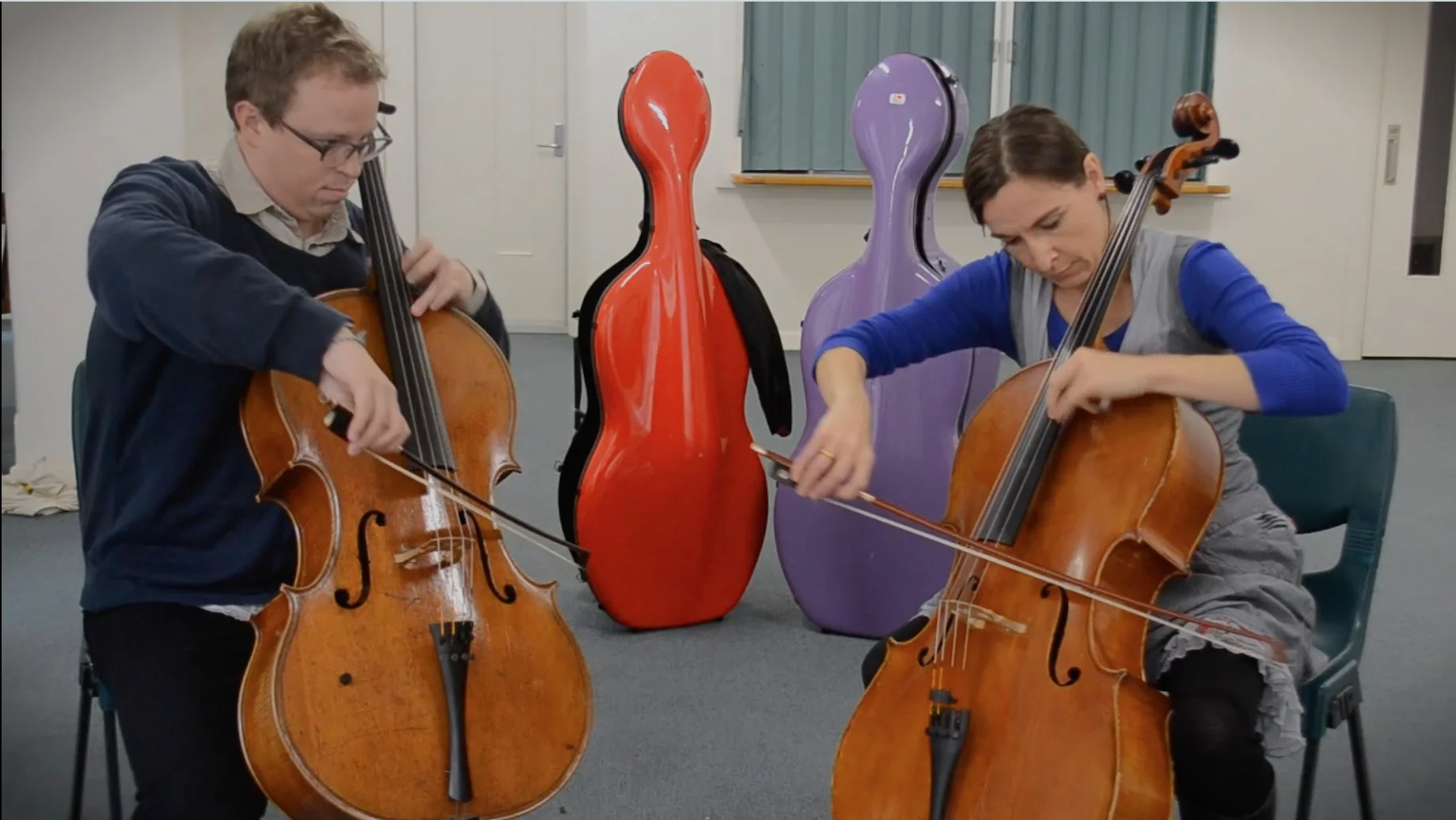Timo-Veikko ('Tipi') Valve, Principal Cellist of Australian Chamber Orchestra
An audio recording of Zoe interviewing Tipi
AN INTERVIEW WITH TIPI
Zoe Knighton sat down with Timo-Veikko ('Tipi') Valve for a chat and play ahead of their June 2017 Hobart, Sydney and Melbourne concerts:
Z: Tell us about the ACO's new cello.
T: Well, it’s a Brothers Amati from 1616 so they tell me… so this year it is 401 years old. With the dendrochronology that they do on the wood, they can tell that the oldest wood is from 1612 and the youngest is from 1616.
[The Amati was purchased by the ACO Instrument Fund for the ACO to use.]
Z: It looks in remarkably good condition.
T: It is in very good condition, especially the back. It has had some work done on the edges but the bits that are original Amati are in extraordinarily good condition.
Z: I have to ask the question - Amati versus Guarneri, is that like Lamborghini versus Maserati?
T: Well yes! I am extremely lucky that the orchestra [ACO] has the Giuseppe Guarneri and it has been an amazing addition to the orchestra’s sound and it affects the sound of the orchestra every time it is played. I am lucky to have been playing on this instrument for nearly ten years already and every time it is played, it inspires the sound of the group.
Z: It is an amazing phenomenon isn’t it, the way the vibrations of one instrument can affect the way another sounds?
T: Absolutely and particularly in a small section like we have with only the three of us in the section, having one new voice makes such a huge difference. It makes the other cellos sound different. I guess the main difference between this cello and the Guarneri is that the Guarneri is this incredibly dark sound and is really suited to the chamber music. The Amati can be all that but it can also be this incredibly strong opera singer and it can really cut through the orchestra. In a small section like ours, it adds another gear to what we can use.
Z: Travelling with an instrument like this must be quite a responsibility.
T: Yes, but it becomes like second nature. Obviously we have to be careful and they do get a seat on the plane. We also have great management who look after them for us when we need a night off.
Z: How do you cope with the immense amount of travel that you do?
T: I cope really well - I love it. All the shared experiences we have together on tour is one of the reasons the orchestra works so well together. We know each other so well beyond the concert stage and the rehearsal room. We’re always in the lounge at the airport together or the hotel and it really helps us understand each other.
Z: We can certainly relate to that in the quartet - our music making always grows on tour and it almost happens on a subconscious level. With all the touring, is Finland home or is Sydney home?
T: Sydney is definitely home, but we’re lucky in that it is easier and easier to stay in touch these days. Even though we live so far away, travel is definitely getting easier.
Z: You joined the orchestra at a relatively young age - how has it been finding your “musical feet” whilst in an orchestra like the ACO?
T: Well it was all sheer luck, really. I joined when I was 26, just after I had finished my studies. I had already been in a string quartet for five or six years with some study mates. We played exclusively as a quartet for a few years and then a couple of the members left to do other things and this gig came along. The transition from playing the amazing quartet repertoire to the artform of the chamber orchestra was very smooth. ACO really is a string quartet.
Z: You’ve chosen to play the second cello part in the Schubert. Cellists often fight over this part, don’t they?! What made you chose this one?
T: I grew up playing the second cello part. Even in my diploma, it was my personal diploma concert and I played the second part. For me it feels more natural as an outsider. It isn’t just an accompanying or supportive role, there are so many spots where the second cello dictates the musical direction.
Z: So what’s your favourite piece by Schubert?
T: Well, it has to be this one.
Z: And not just because we play the cello!
T: No! It really is the piece for me. There are few pieces of chamber music that really excel to this level. There’s not one moment where you are in doubt as to how to play it.
Click here for full concert program details, dates, venues, and booking information.


